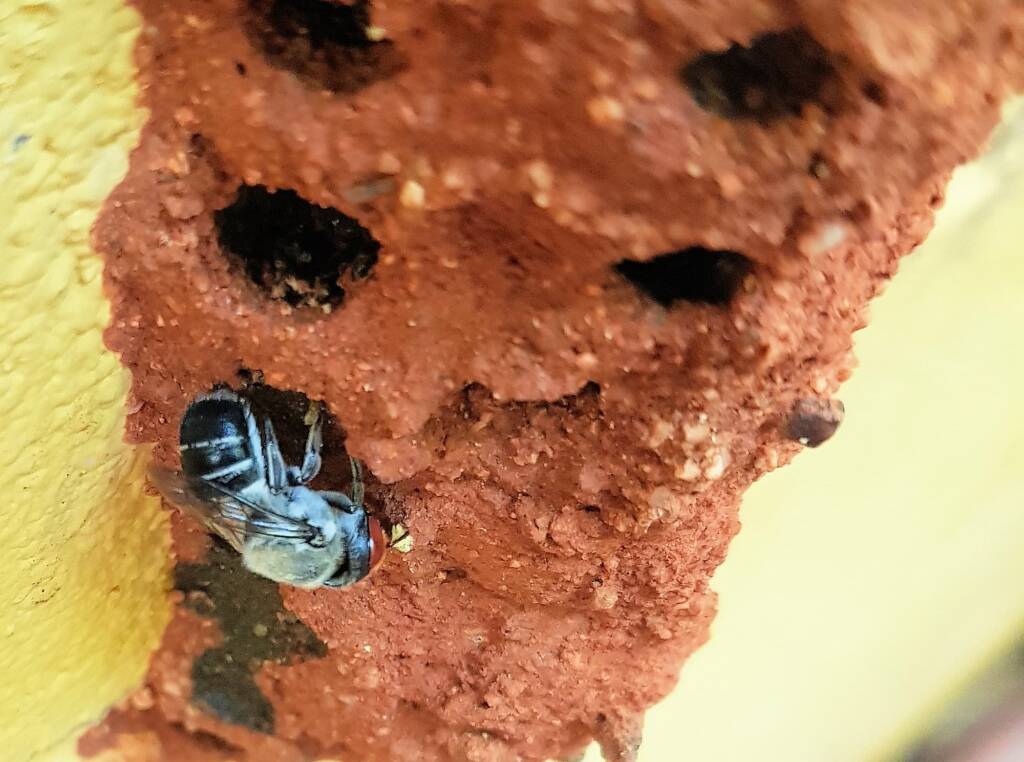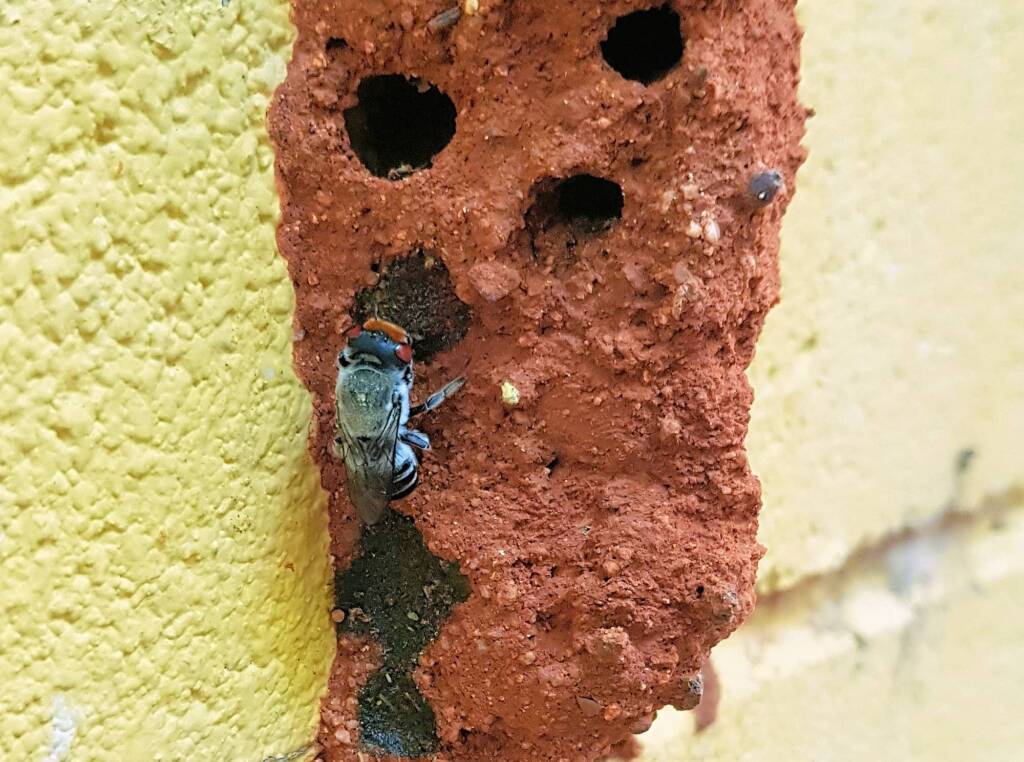Megachile aurifronscapping the nest generalist feeder nest cell activity nesting new life opportunity knocks makita pollen private moments red eyes five eyes resin squatting bee video bee video sequel
The Australian native bee Megachile aurifrons are known to take over the empty holes of other insects, particularly the abandoned mud nests of wasps. This “squatting” habit is certainly a popular practice by various solitary species of bees.

You can see the resin capped nest on the lower left.
Some observers will know that select species of mud wasp often come back to the same mud nests, but they rarely use the same holes to lay their larvae, instead they add more mud to create fresh nesting holes, creating nesting edifices that grow over the years.
In the following reddish mud nest images, the mud nest of the Potter Wasp (Eumenes latreilli) is about 20 cm in height, on a west facing wall of a house, that is shaded by a high fence with bamboo growing along the fence. This provides a cool shaded laneway environment even on the warmest day.
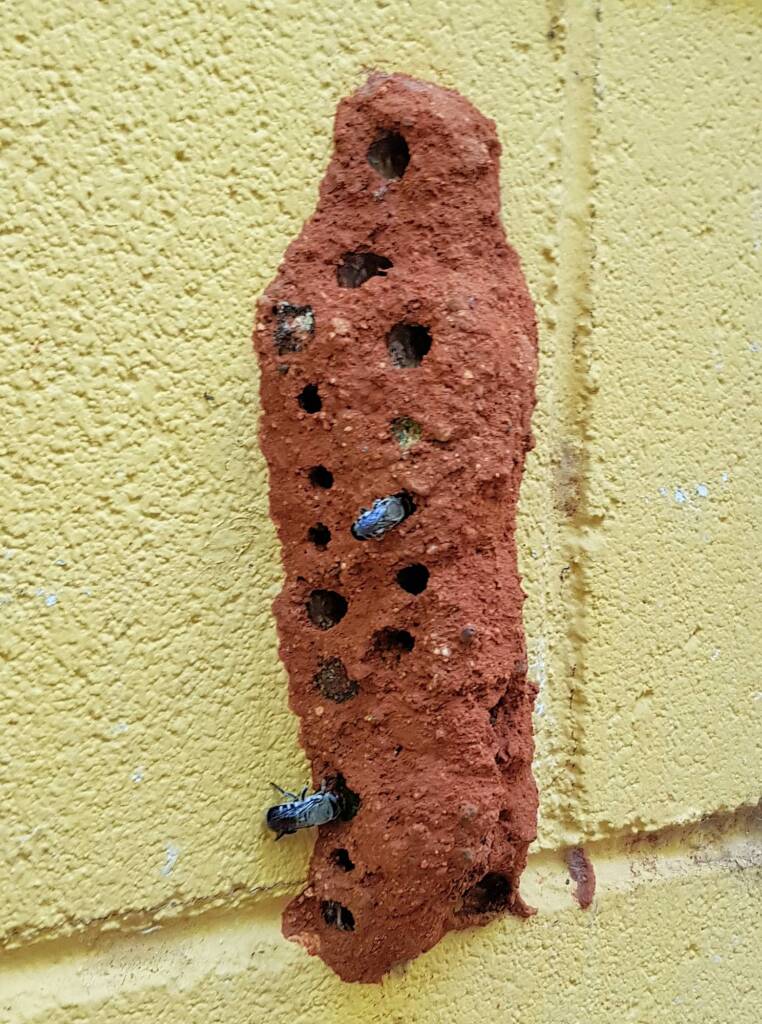

Strangely, the Megachile aurifrons seem to prefer to use the holes on the left (which is orientated north), leaving the holes on the right vacant.
Once the Megachile aurifrons have laid their egg in the hole, they then cap the hole with a resin like cap, hence their common name of Golden-browed Resin Bee.
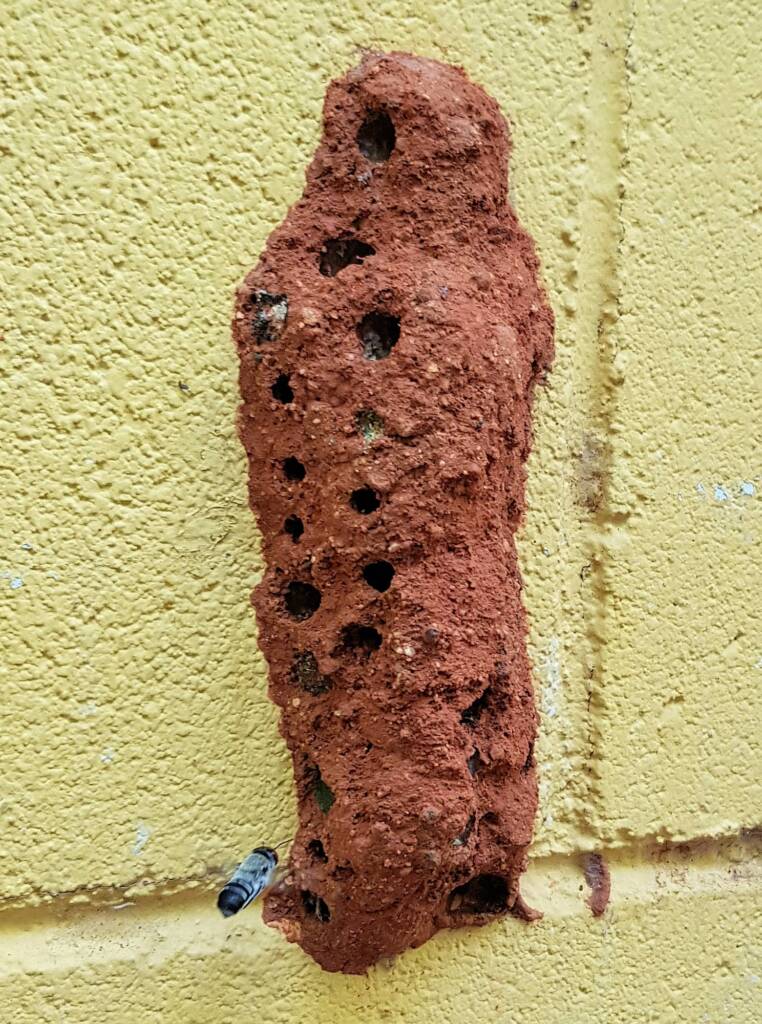

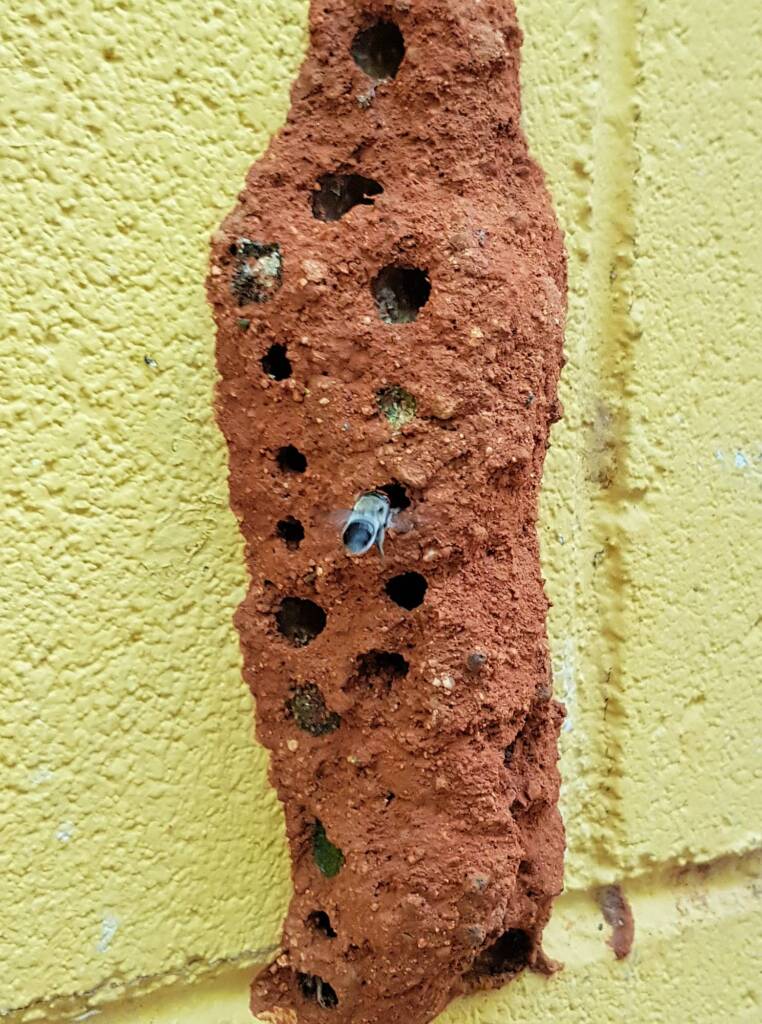

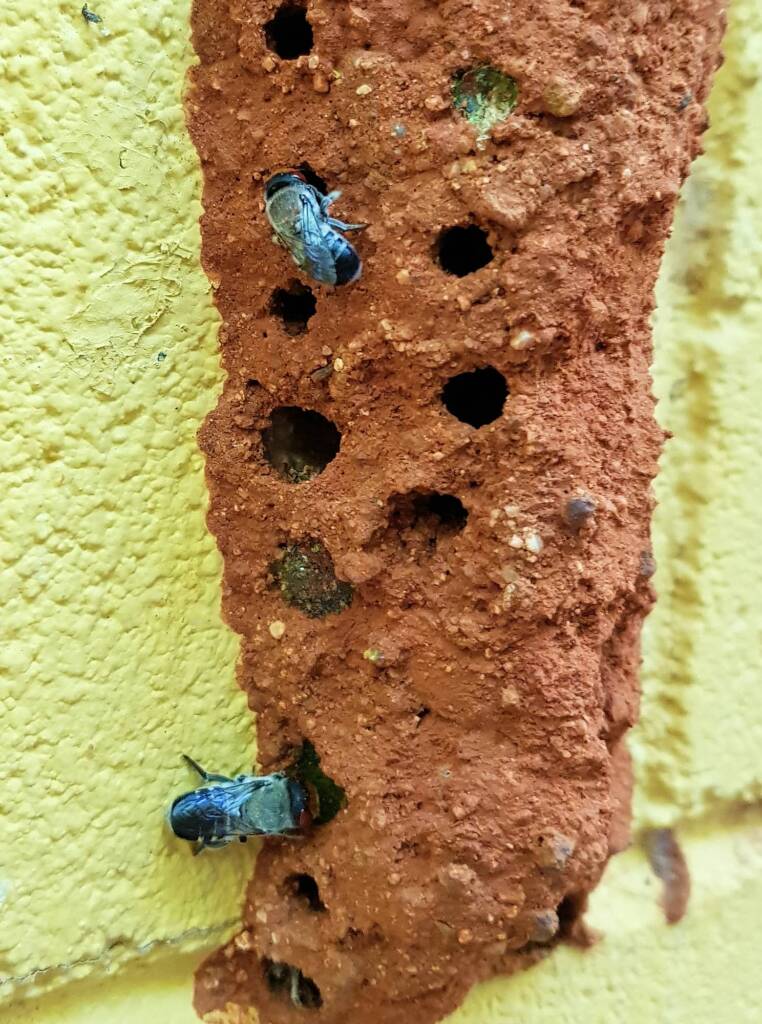
The Megachile aurifrons belong to the family Megachilidae, known as the “leafcutter”. The species in this family use leaves to line their nests. The Megachile aurifrons macerates the leaf into a pulp, creating a resin-like material to seal the hole where the offsprings are laid with the pollen. In the below images you can see the bee preparing the nest and just above the hole she is working on there is a resin capped hole.


In the following mud structure of a different wasp species, the Megachile aurifrons is preparing the nesting before capping it. You can see one green resin capped nest above another hole. This bee was seen to go into the hole below and then back to the capped hole above. It is assumed she is preparing more resin in the hole below, to add to the capped hole above.
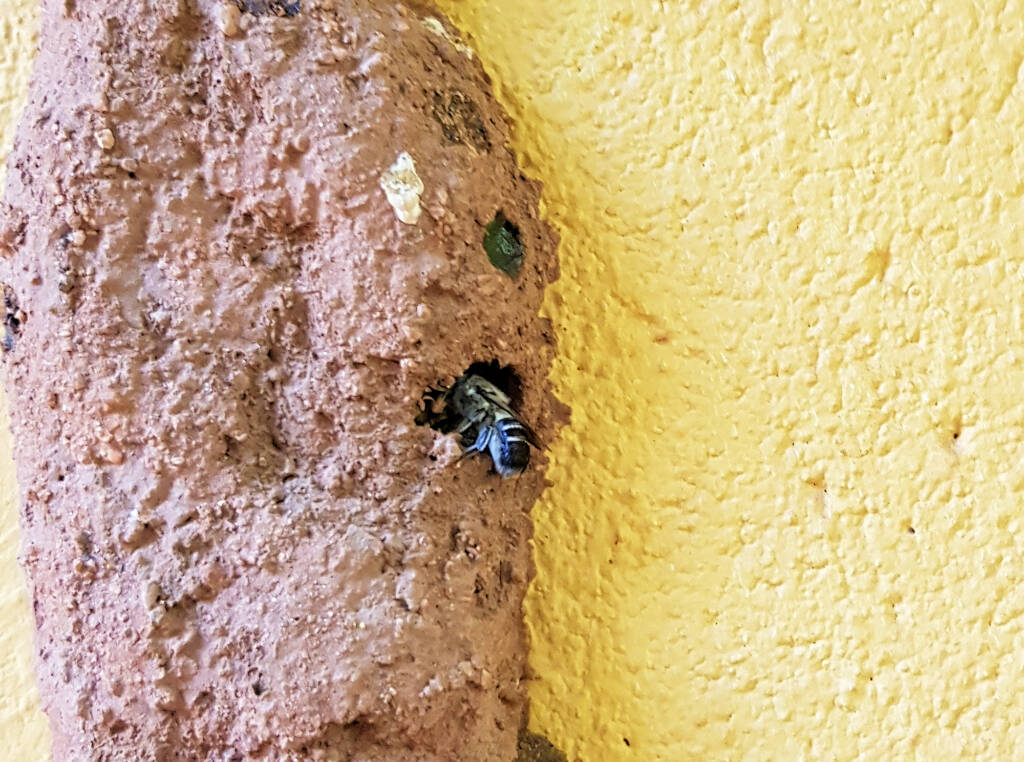
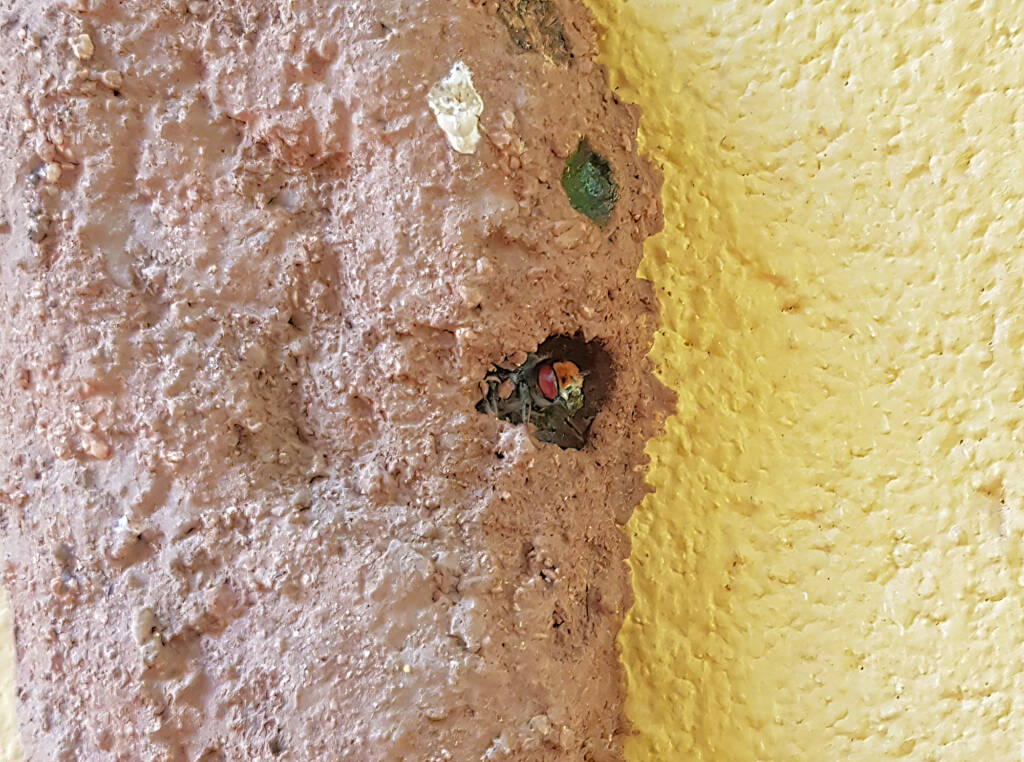
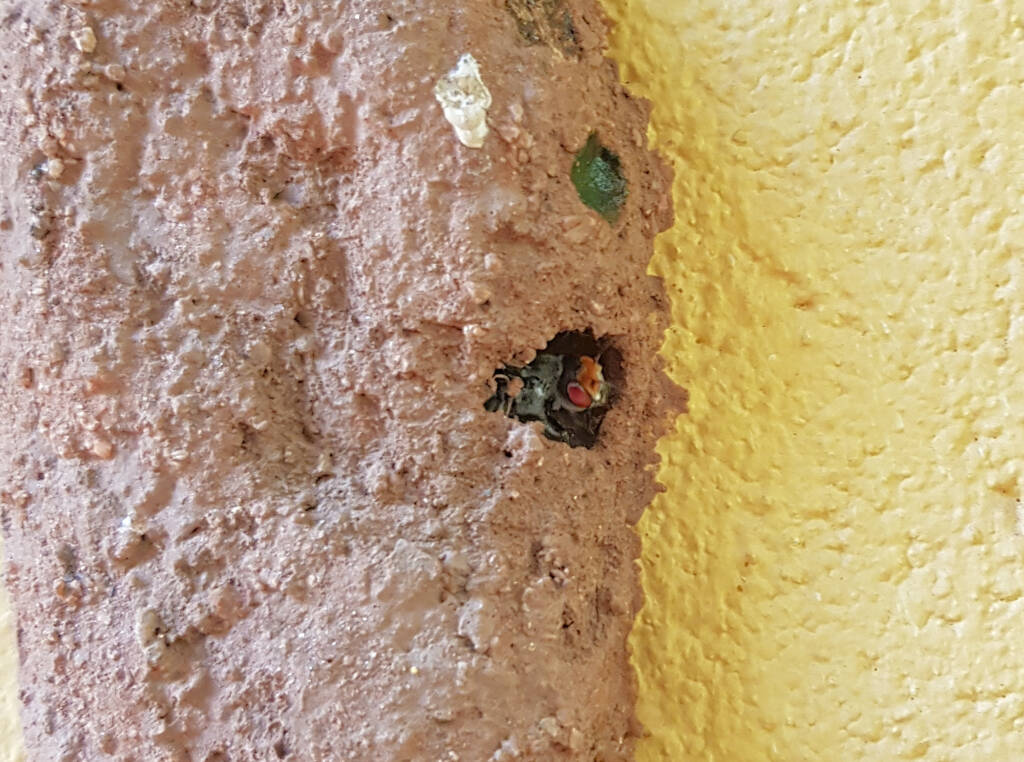
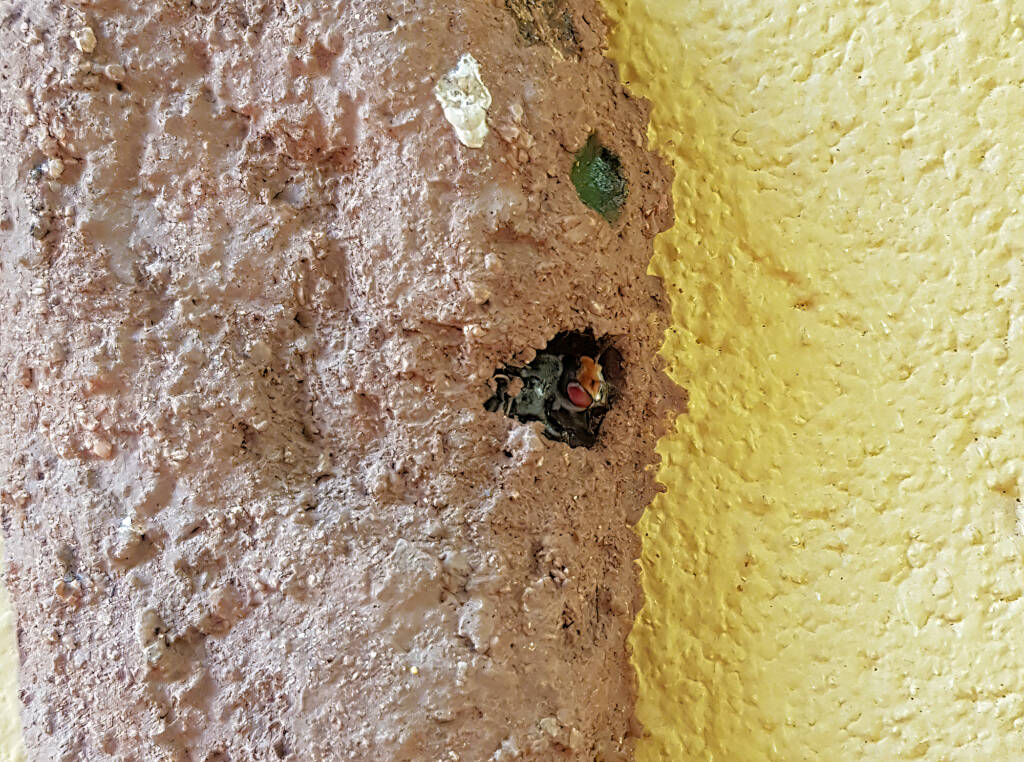

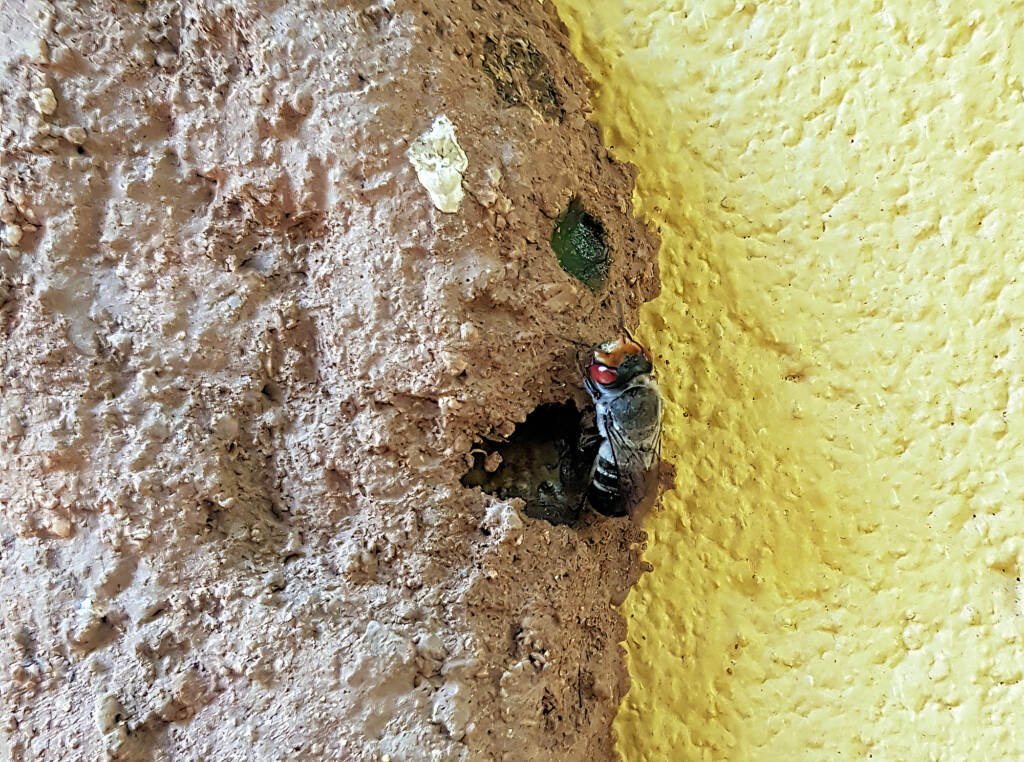
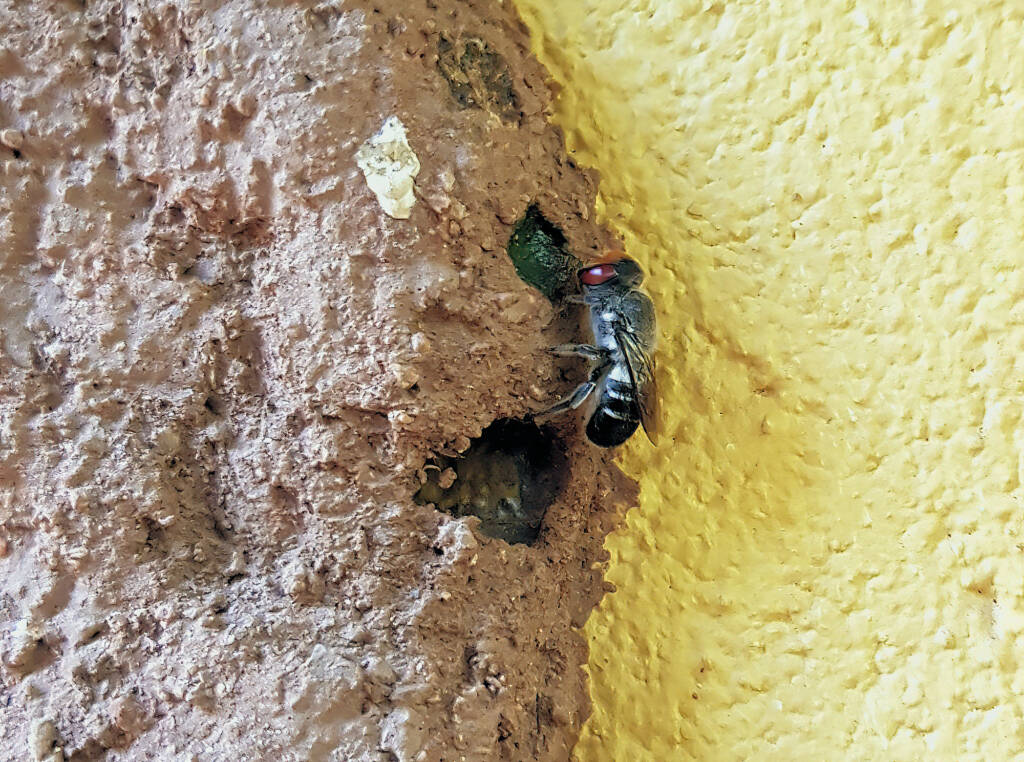
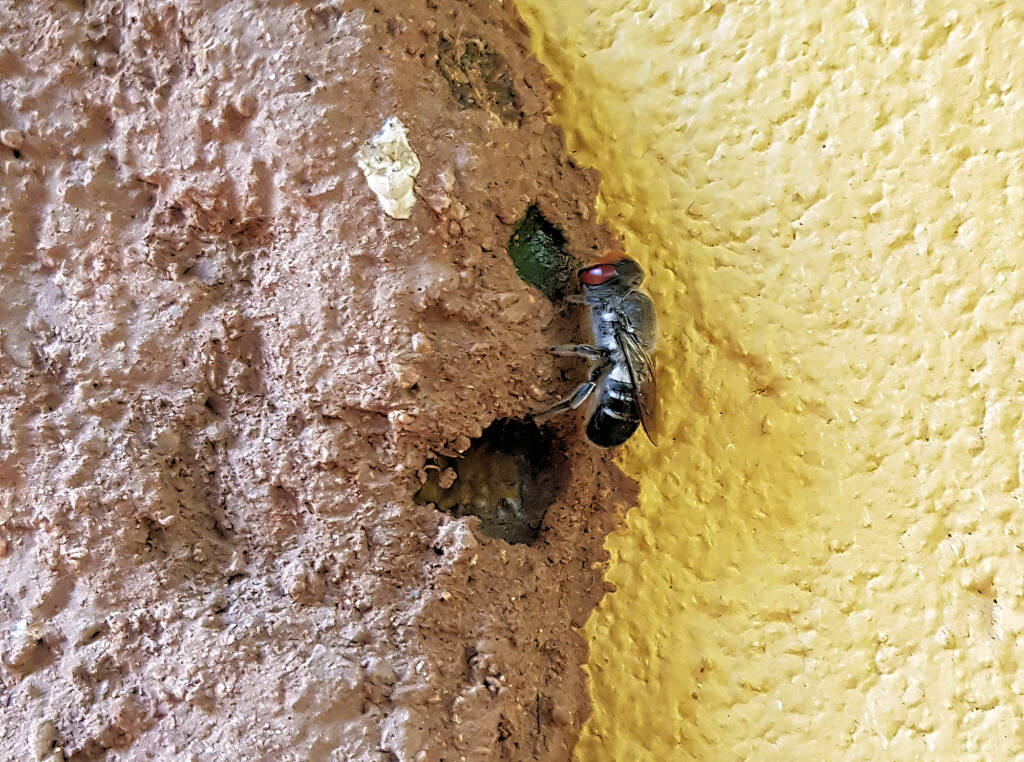

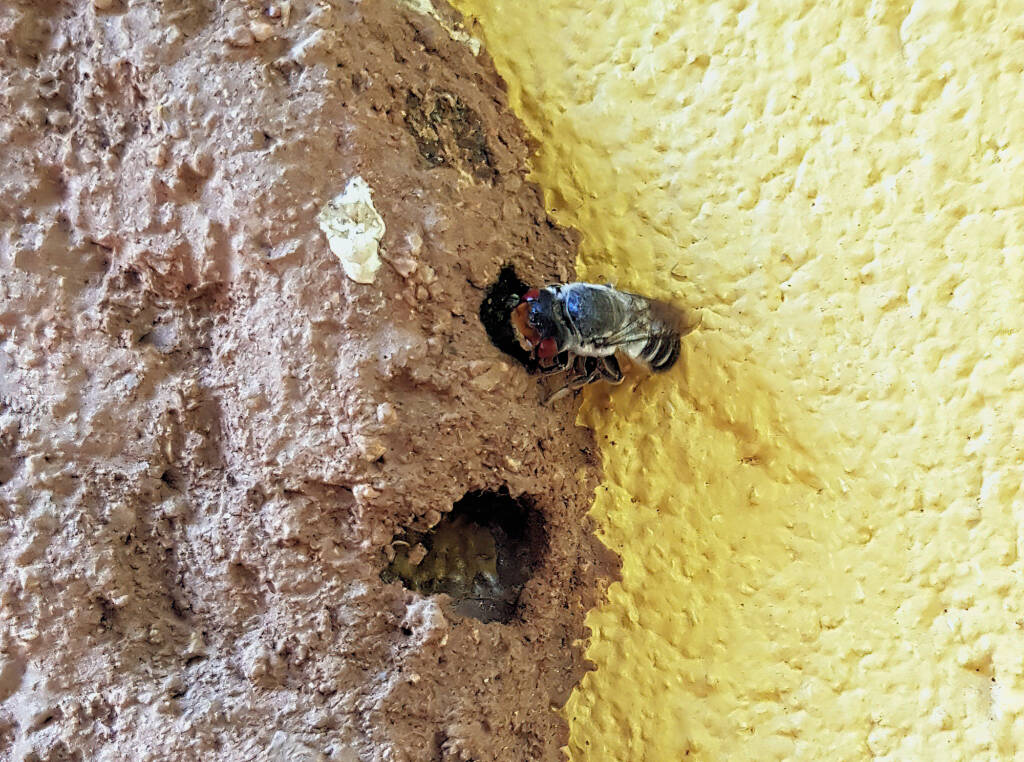

Once one hole is capped, the Megachile aurifrons went to work on preparing another hole for capping. The green coloration of the resin used to cap the hole is from the the leaves that the bee macerates into a pulp to create the resin.
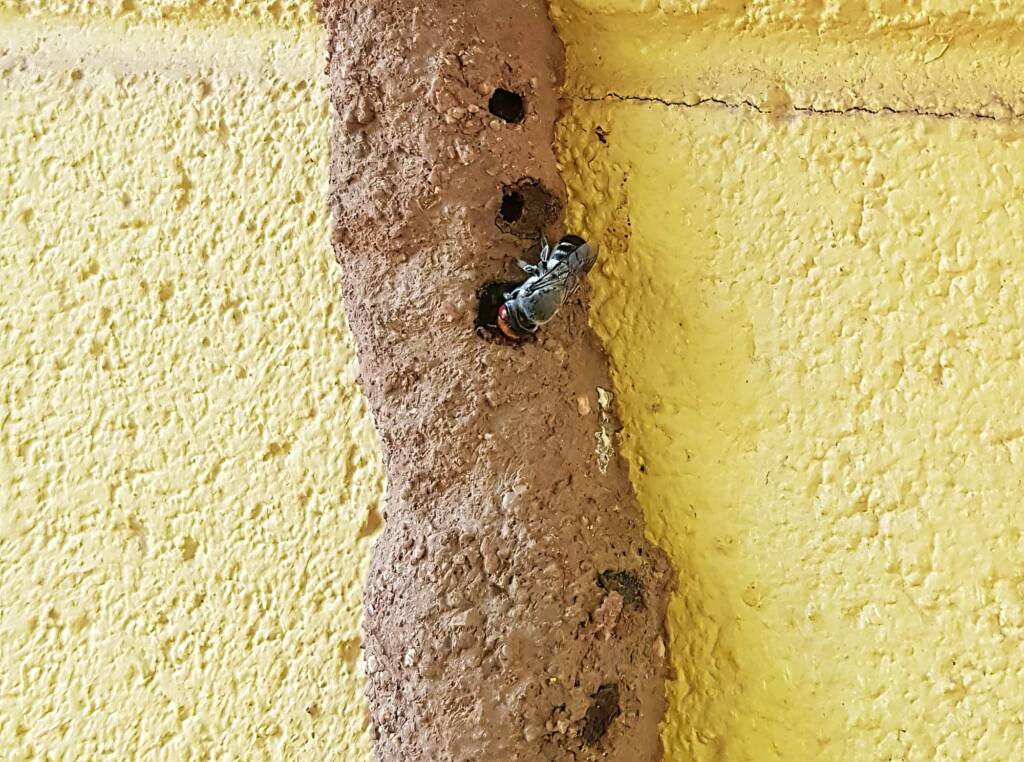
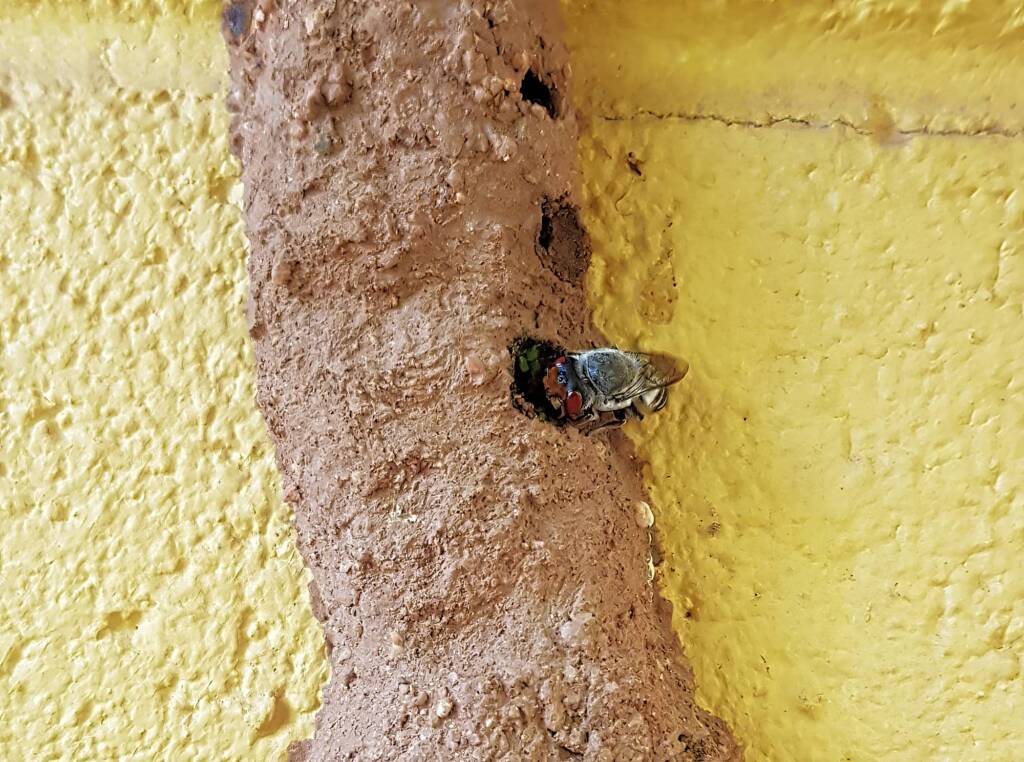
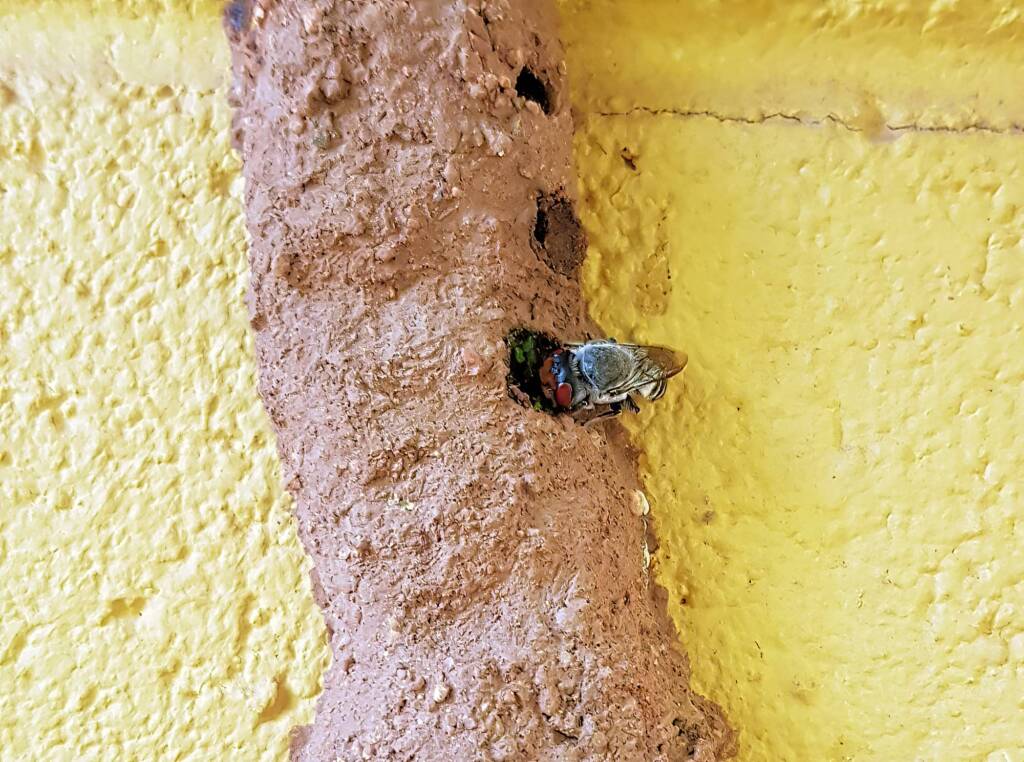

This mud structure was over 30 cm long.
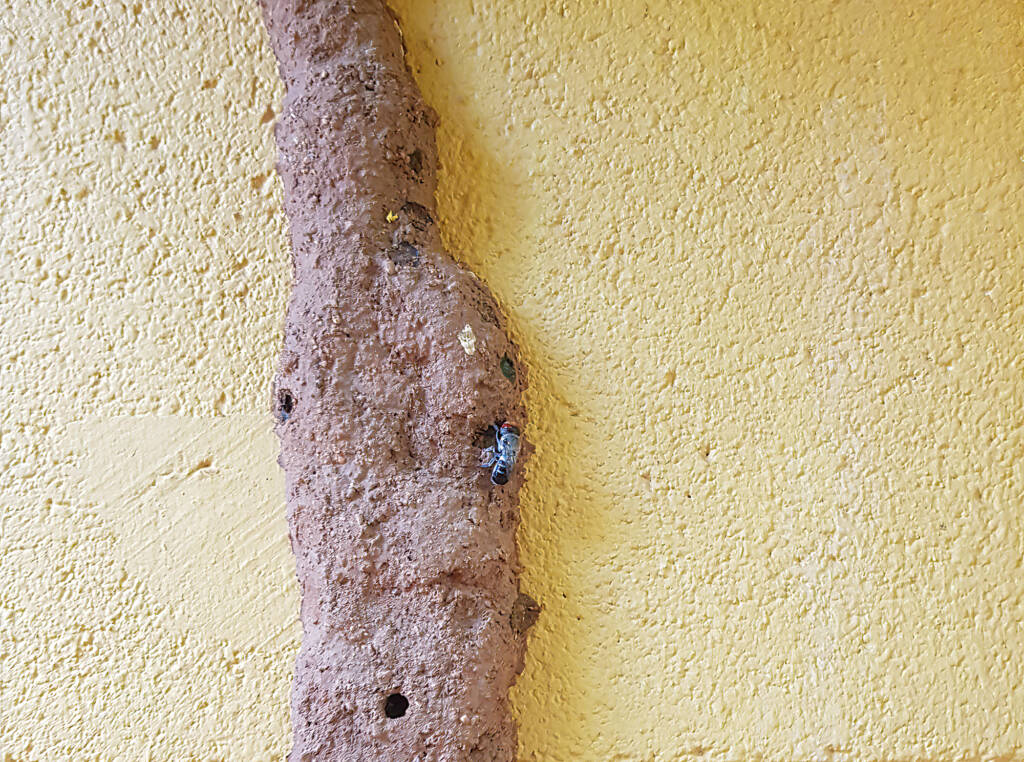
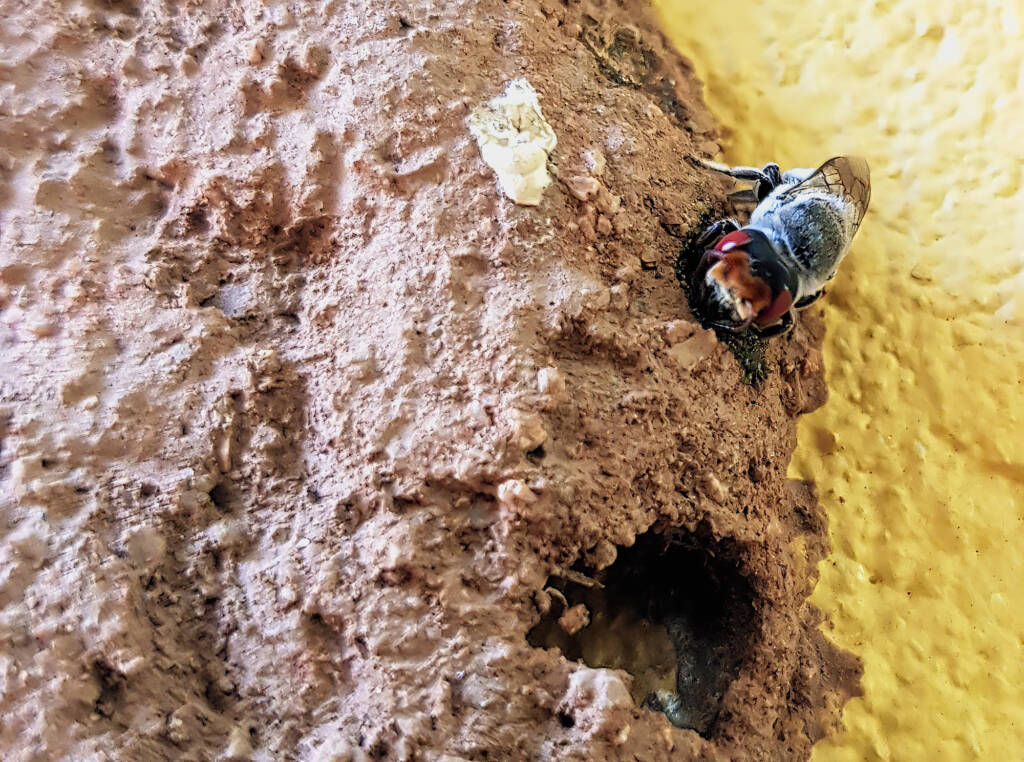
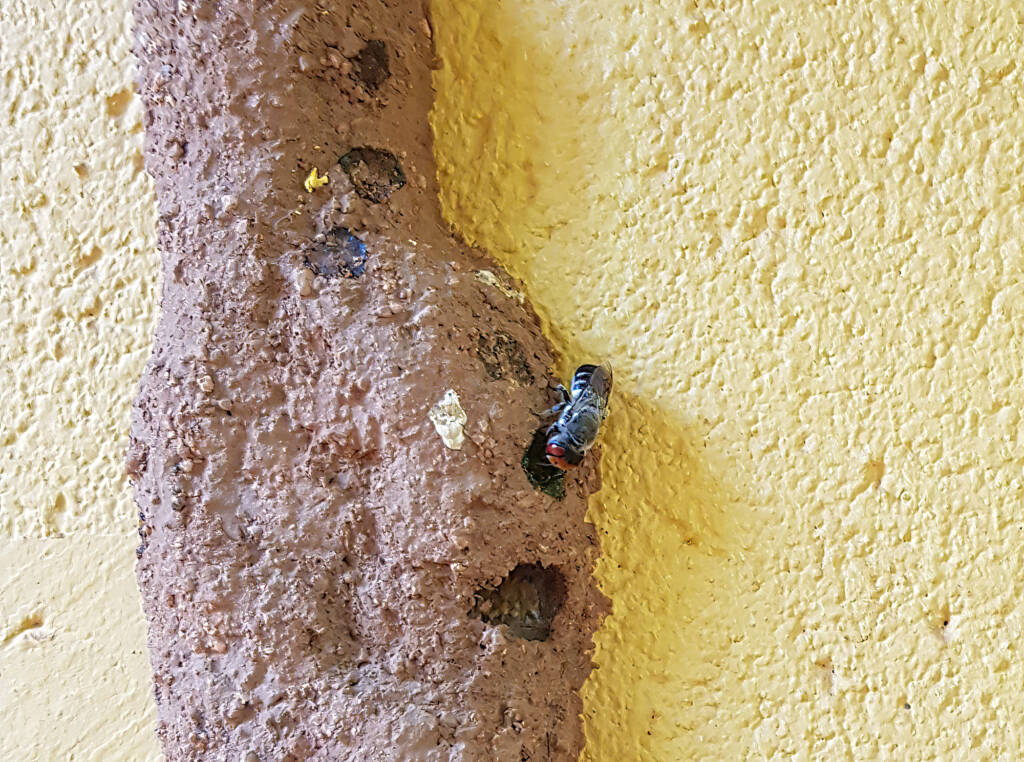

Following are the the two types of wasps that built the mud nests shown here. The larger wasp (Eumenes latreilli) created their mud nest using the reddish sand as a base, whilst the lighter brown sand was created by the smaller wasps (Abispa sp). There is a noticeable difference in the colour of their wings and size.


The look of the mud nests are different in structure and appearance.

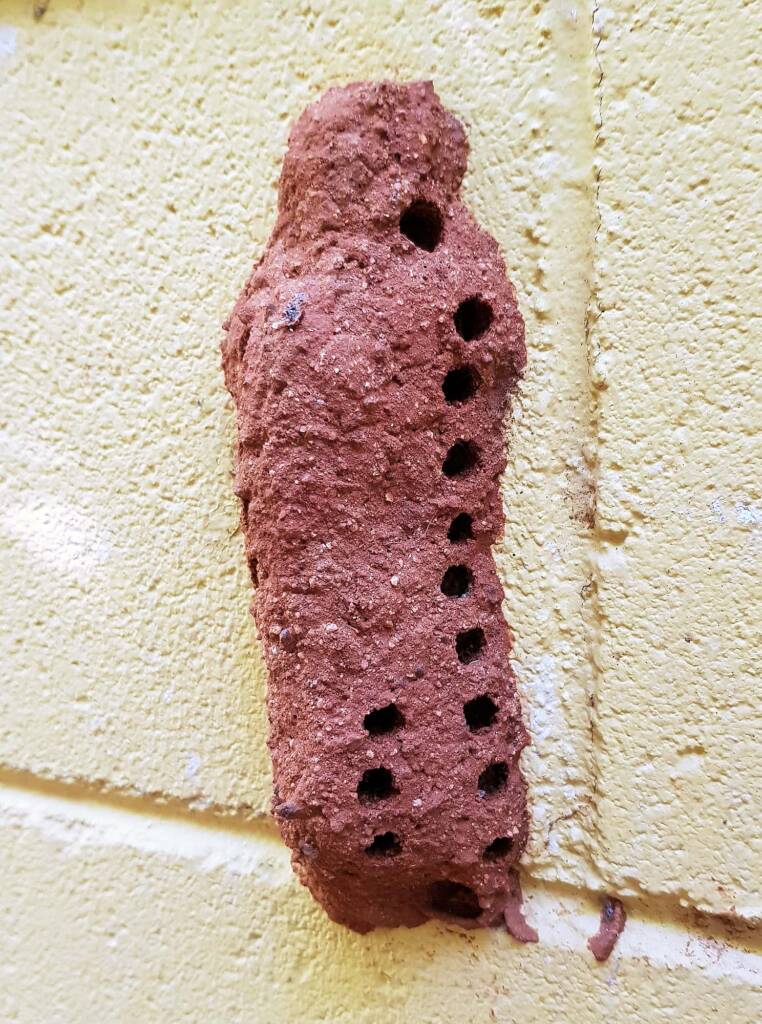
- Scientific classification
- Kingdom: Animalia
- Phylum: Arthropoda
- Class: Insecta
- Order: Hymenoptera
- Family: Megachilidae
- Genus: Megachile
- Species: Megachile aurifrons
Megachile aurifronscapping the nest generalist feeder nest cell activity nesting new life opportunity knocks makita pollen private moments red eyes five eyes resin squatting bee video bee video sequel
BeesBees Anatomy Bee Behaviour Blogging Bees… Bees – image index Amegilla Bee Apis mellifera Austroplebeia australis Austrothurgus Braunsapis sp Ceylalictus perditellus Colletidae Euryglossinae Exoneura Homalictus Hyleoides bivulnerata Lasioglossum Lasioglossum (Chilalictus) Lipotriches Megachile Meroglossa Stenotritidae Tetragonula Thyreus Xylocopa




